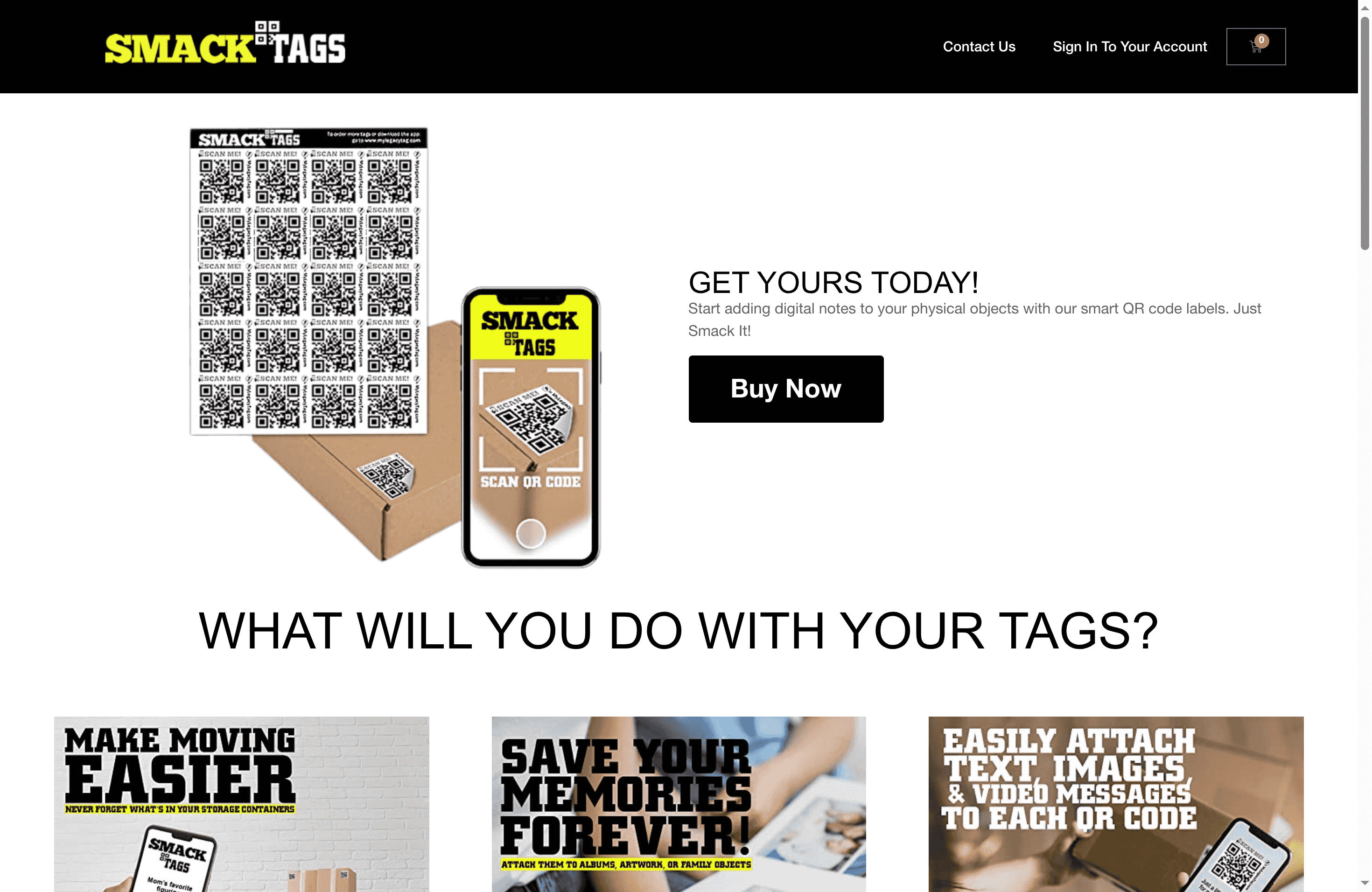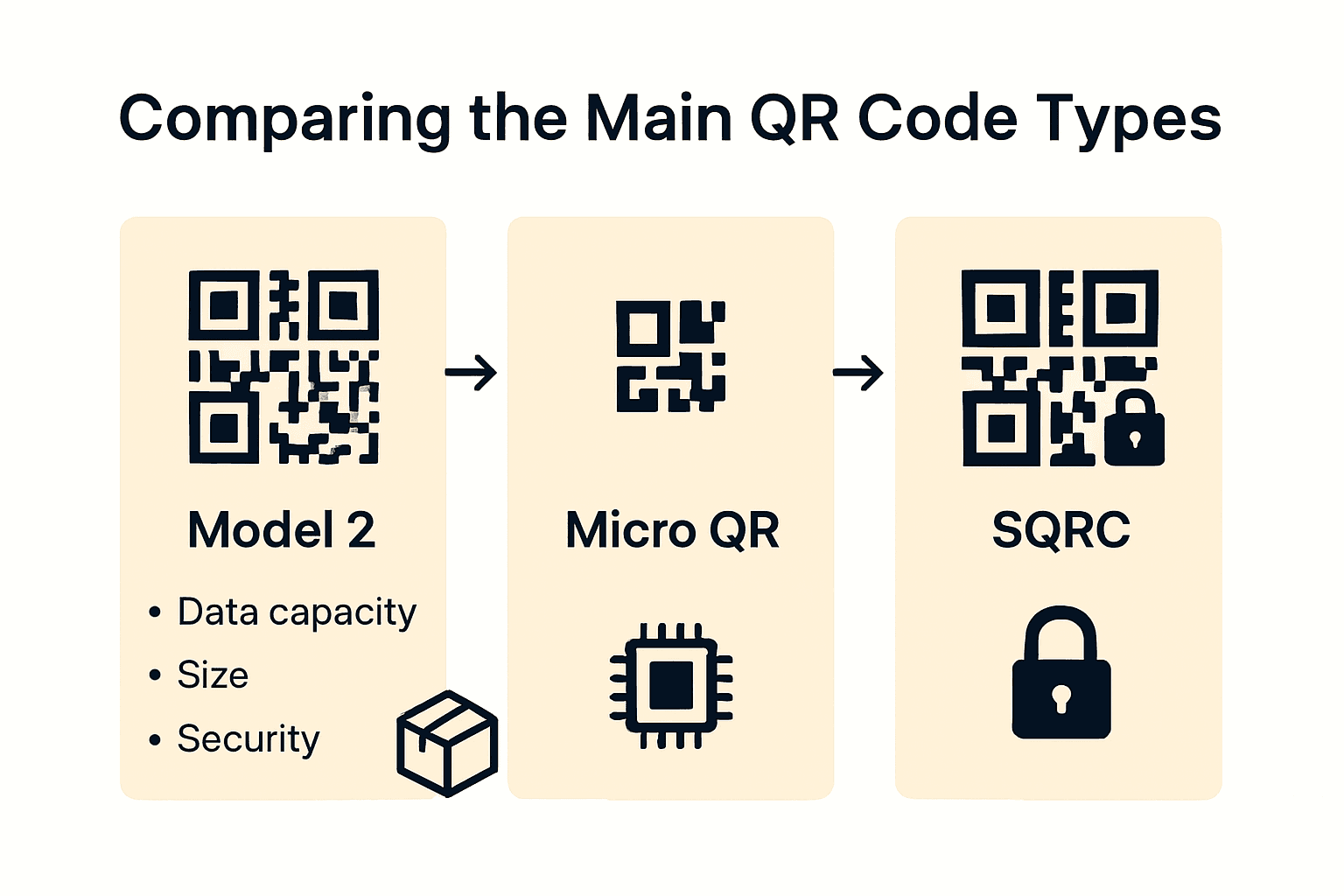Complete Guide to Information Access via QR Codes
Everyday objects now link to digital worlds with a single scan. Over 90 percent of smartphone users have encountered QR codes, turning simple labels into gateways for information, payments, or even healthcare records. With their rising use in daily life, understanding how QR codes work and unlock data quickly is more than just a tech trend. This guide reveals how QR codes simplify access, the types you might see, and the benefits they bring to both businesses and individuals.
Table of Contents
- Understanding QR Codes And Information Access
- Types Of QR Codes And Their Uses
- How QR Code Label Systems Work
- Real-World Applications And User Benefits
- Privacy, Security, And Cost Considerations
Key Takeaways
| Point | Details |
|---|---|
| High Data Capacity | QR codes can store extensive information, up to 4,296 alphanumeric characters, enabling efficient data encoding. |
| Versatile Applications | QR codes are widely used across various industries, including marketing, education, and healthcare, enhancing user engagement and information access. |
| Security Considerations | Users must implement verification protocols and secure scanning practices to mitigate risks associated with privacy vulnerabilities and malicious codes. |
| Diverse Code Types | Different QR code models, such as Micro QR and SQRC, cater to specific needs, offering improved functionality for various applications. |
Understanding QR Codes and Information Access
QR codes represent a powerful digital technology that transforms how we access and share information. According to research from ijarsct, these two-dimensional barcodes offer remarkable capabilities for storing and rapidly retrieving digital data through simple scanning mechanisms.
At their core, QR codes are advanced matrix barcodes designed to encode information in a compact, visually compact format. As detailed by ijcaonline, these codes can store significantly more data compared to traditional linear barcodes. Their unique design allows for quick and reliable information retrieval through smartphone cameras and specialized scanning applications.
The key features that make QR codes exceptional for information access include:
- High Data Capacity: Can store up to 4,296 alphanumeric characters in a single code
- Error Correction: Advanced algorithms allow data retrieval even if part of the code is damaged
- Rapid Scanning: Enables instant information access within milliseconds
- Versatility: Applicable across multiple industries including marketing, logistics, and personal organization
By transforming complex digital information into a simple, scannable visual format, QR codes bridge the gap between physical and digital worlds. Whether you’re an artist tracking artwork, a business managing inventory, or an individual preserving family memories, these smart labels offer an intuitive way to connect physical objects with rich digital content.
Types of QR Codes and Their Uses
QR codes are not a one-size-fits-all technology, but rather a diverse family of digital encoding systems with unique characteristics. According to research from jetir, multiple QR code models have emerged to address specific technological and industry needs, each offering distinct capabilities and applications.
Standard QR Codes represent the most common type, capable of storing various data types including website URLs, contact information, and plain text. These traditional codes are widely used in marketing, event management, and personal information sharing. However, specialized variants have been developed to address more complex requirements across different sectors.
The primary types of QR codes include:
Here’s a comparison of the main types of QR codes and their typical uses:
| QR Code Type | Main Features | Common Applications |
|---|---|---|
| Model 1 | Basic design Low data capacity |
Early QR projects Prototypes |
| Model 2 | Enhanced capacity Better error correction |
Marketing Product packaging |
| Micro QR Code | Small size Fits tight spaces |
Electronics Asset labeling |
| iQR Code | High data density Flexible shape |
Industrial tracking Document management |
| SQRC (Secure QR) | Data restriction Privacy features |
Security tags Access control |
| Frame QR Code | Customizable look Includes logos |
Branding Advertising |
- Model 1 QR Codes: The original design with basic data storage capabilities
- Model 2 QR Codes: Enhanced version with improved error correction and data capacity
- Micro QR Codes: Compact versions designed for smaller physical spaces and limited printing areas
- iQR Codes: Advanced codes capable of storing more data in a smaller physical footprint
- SQRC (Secure QR Codes): Specialized codes with enhanced privacy features, allowing restricted data access
- Frame QR Codes: Codes that incorporate decorative elements or logos while maintaining scanning functionality
By exploring the role of QR codes in business, organizations and individuals can leverage these versatile tools to streamline information sharing, enhance user experiences, and create more dynamic connections between physical and digital environments.
How QR Code Label Systems Work
QR code label systems are sophisticated digital communication tools that transform complex data into easily scannable visual formats. According to research from ijarsct, these systems operate through intricate encoding and decoding processes that convert information into a two-dimensional matrix that can be quickly retrieved by digital devices.
The core mechanism of QR code label systems involves several critical structural components. As explained by ijcaonline, these include specific patterns that enable accurate scanning and data interpretation. Key structural elements like finder patterns, timing patterns, and alignment patterns work together to ensure precise information transfer.
The operational process of QR code label systems can be broken down into several key stages:
- Data Encoding: Converting digital information into a structured matrix of black and white squares
- Pattern Generation: Creating specialized markers that enable accurate scanning
- Error Correction: Implementing algorithms that maintain data integrity even if part of the code is damaged
- Scanning: Using smartphone cameras or specialized readers to interpret the coded information
For those looking to implement QR code systems in their projects, exploring our guide to organizing with QR codes can provide additional insights into practical applications and best practices for leveraging this innovative technology.
Real-World Applications and User Benefits
QR codes have revolutionized information sharing across multiple industries, offering unprecedented ways to connect physical and digital experiences. According to research from ijarsct, these versatile technologies have found remarkable applications in sectors ranging from marketing and education to healthcare and personal organization.
In the business world, QR codes provide dynamic solutions for enhancing user engagement and streamlining communication processes. ijcaonline highlights how these digital tools enable organizations to quickly share complex information through a simple, scannable interface. This capability transforms traditional communication methods by making information instantly accessible.
The key real-world applications and user benefits include:
- Marketing: Instant access to product details, promotional content, and interactive brand experiences
- Education: Quick sharing of learning resources, syllabi, and supplementary educational materials
- Healthcare: Rapid patient information retrieval, medication tracking, and medical history access
- Personal Organization: Efficient inventory management, memory preservation, and digital storytelling
- Event Management: Contactless ticket verification and attendee information tracking
To dive deeper into practical implementation strategies, exploring our guide to QR codes in projects can provide valuable insights into maximizing the potential of these innovative digital tools.
Privacy, Security, and Cost Considerations
QR code technologies present a complex landscape of potential risks and benefits that users must carefully navigate. According to groundbreaking research from arxiv, emerging methods like QRïS are developing sophisticated techniques to detect potential security threats embedded within QR code structures, highlighting the ongoing evolution of digital safety mechanisms.
Privacy vulnerabilities represent a significant concern in QR code implementation. Research from arxiv reveals that malicious actors can potentially encode dual messages within standard QR codes, creating potential pathways for unauthorized data manipulation or information extraction. This underscores the critical importance of implementing robust verification protocols when interacting with unfamiliar QR code systems.
Key considerations for responsible QR code usage include:

- Verification Protocols: Always verify the source of QR codes before scanning
- Data Protection: Use secure scanning applications with built-in safety features
- Personal Information: Limit the amount of sensitive data encoded in public QR codes
- Cost Analysis: Evaluate subscription fees and potential infrastructure expenses
- Technical Support: Consider ongoing maintenance and update requirements
For organizations seeking comprehensive guidance on implementing secure QR code strategies, exploring our guide to QR codes in projects can provide valuable insights into best practices and risk mitigation techniques.
Unlock the Full Potential of QR Codes with Smack Tags
Understanding the power of QR codes is just the beginning of transforming how you access and organize your information. If you have ever struggled with storing vital data, preserving memories, or managing inventory efficiently, adopting a smart QR code label system can change everything. The article highlights challenges like ensuring data integrity, ease of access, and secure sharing. Smack Tags addresses these pain points with durable, easy-to-use QR code stickers designed to store videos, text, and images without requiring any app. This means your most cherished items or important business assets are just a scan away from rich digital content.
Explore how you can move beyond basic QR codes by choosing a solution that offers privacy, reliability, and seamless digital integration. Our creative collection of QR code labels is perfect for personal stories, business uses, and much more. Start organizing smarter by visiting Creative – Smack Tags.

Make the leap today to experience a new level of convenience and security in information access. Visit smacktags.com now to choose your QR code labels and transform how you connect the physical and digital worlds. To learn practical steps on applying QR codes effectively, check out our guide on organizing with QR codes. Take control of your information before lost or cluttered data slows you down.
Frequently Asked Questions
What are QR codes and how do they work?
QR codes, or Quick Response codes, are two-dimensional barcodes that encode information in a compact format. They work by converting digital information into a structured matrix that can be scanned using smartphone cameras or specialized readers, allowing for rapid data retrieval.
What types of data can QR codes store?
QR codes can store various types of data, including website URLs, contact information, text, and more. Their high data capacity allows them to hold up to 4,296 alphanumeric characters.
How can I ensure the security of QR codes?
To ensure the security of QR codes, always verify the source before scanning, use secure scanning applications, limit sensitive data encoded in public QR codes, and implement verification protocols to protect against malicious uses.
What are the different types of QR codes and their uses?
There are several types of QR codes including Model 1, Model 2, Micro QR, iQR, SQRC (Secure QR), and Frame QR codes. Each type has specific features suited for applications like marketing, product packaging, electronics labeling, and access control.

